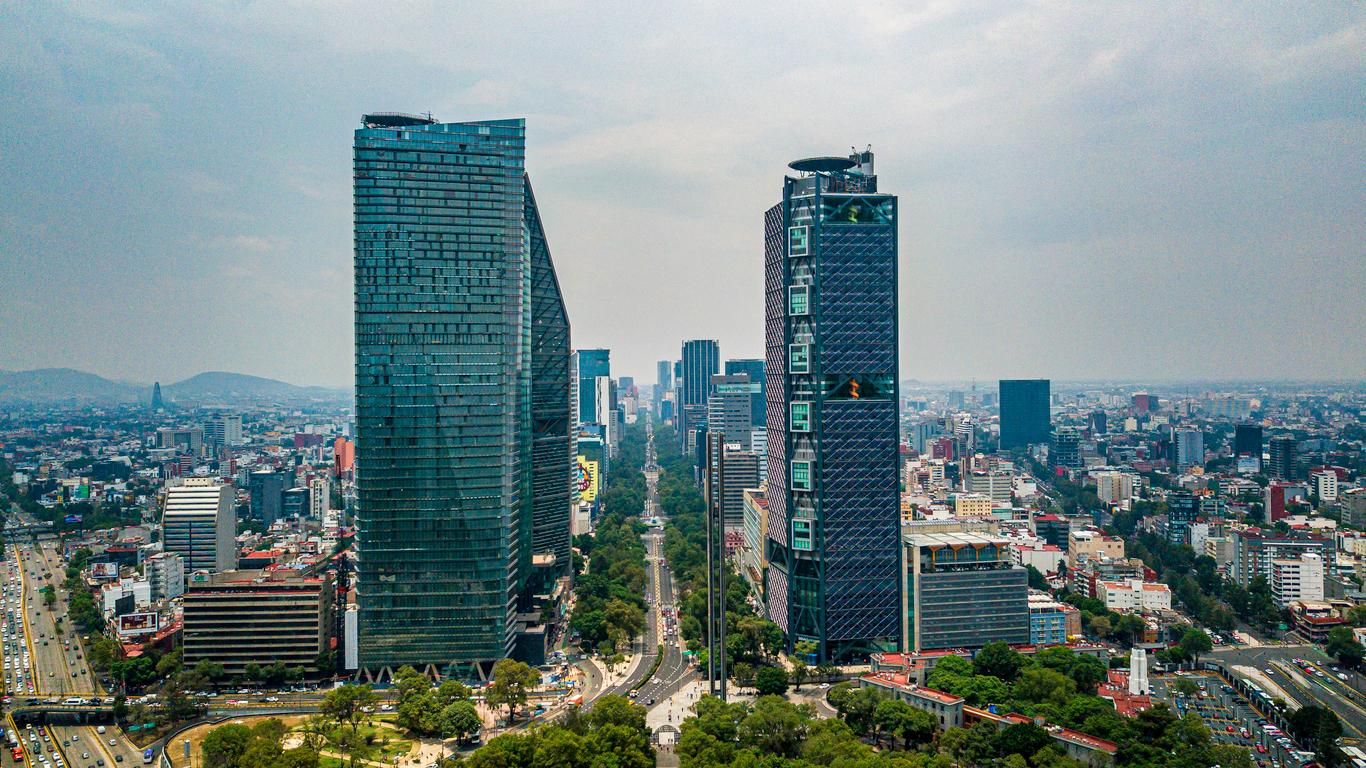Paseo de la Reforma is a wide avenue and major thoroughfare which runs diagonally through the centre of Mexico City. With a design based on the great boulevards of Europe, it is home to castles, monuments, modern skyscrapers and restaurants.
A wonderful area from which to view Paseo de la Reforma is from Chapultepec Castle, standing at the height of 2,325 metres above sea level. The castle, located just off the paseo was once a sacred Aztec site and currently serves as the National Museum of History. The museum has twelve rooms, each housing objects from various stages of Mexican history ranging from “The Conquest” to the Mexican War of Independence. Outside, the old observatory and gardens are an ideal place from which to view the cityscape. Opposite the castle stands Torre Mayor, one of Latin America’s tallest structures, a contemporary glass-fronted building, constructed to withstand earthquakes. Visitors travelling with friends and family will enjoy a day strolling through Bosque de Chapultepec. Ambling down Paseo de la Reforma itself, visitors will discover a beautifully decorated monument dedicated to Cuauhtémoc, the last Aztec ruler, standing proudly at the intersection of Avenida de los Insurgentes. There are also columns for Christopher Columbus, Simón Bolívar and the Angel of Independence. On Sunday mornings, the street is closed to vehicles making it the perfect place to cycle and discover all the attractions. Visitors hoping to indulge in a little retail therapy will find shopping malls and independent stores to browse and a variety of restaurants.
Paseo de la Reforma is easy to reach from Chapultepec Castle and Bosque de Chapultepec on foot in under 20 minutes. Bus services operate throughout the city stopping just off the avenue. A popular mode of transport is the local metro. Disembark at Hidalgo for museums and galleries, Chapultepec for the park and castle, and Insurgentes for the Angel of Independence monument. Taxis and Uber are available throughout the city.
Before designing Paseo de la Reforma, architects and planners looked at great city streets such as the Champs-Élysées in Paris and Ringstrasse in Vienna. This grand avenue incorporates the features and benefits of both. Today, Paseo de la Reforma is one of the most visited streets in Mexico City. Whether daytime or evening, it springs to life with its vibrancy, bustling ambience and blend of past and present architecture.





